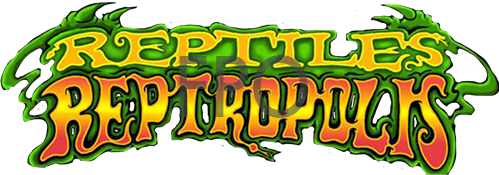CARE & SUPPLIES
(949) 492-6598
QUALITY BRED
CAPTIVE SINCE 2008
QUALITY BRED
CAPTIVE SINCE 2008
CARE & SUPPLIES
(949) 492-6598
TIBERIUS
loves being held
hates rom coms
LEOPARD GECKOS
LEOPARD GECKO CARE SHEET
Leopard geckos are nocturnal lizards found in desert environments in Afghanistan, Iran, Pakistan, and parts of India. They have been popular pets in North America since the 1980’s.
Despite being one of the most popular lizard pets, little is known about leopard geckos in the wild. Their population numbers are unknown, and their unique dots and coloring make perfect camouflage for their natural environments, which makes them a challenge to find.
Leopard geckos are excellent at hiding from predators, and stay hidden during the day, which also protects them from the heat. Leopard geckos also shed their skin to prevent predators from picking up their scent.
APPEARANCE
Leopard geckos are among the largest geckos, with adults attaining a length of around 8 or 9 inches. Most baby leopard geckos have bands on their body instead of spots. As they get older, the band will separate and develop into spots. This will usually happen when the leopard gecko is one year old. They also have a very obvious outer ear and differ from many geckos in that they have eyelids. They lack adhesive lamellae, meaning they can’t walk up vertical services.
LIFESPAN
Leopard geckos can live for 20 years or longer if their owner makes sure they have proper nutrition, habitat, and monitors them for health issues.
HABITAT
A 20 gallon long aquarium is adequate for two or three geckos. Make sure that you only have one male per enclosure, as males will fight each other. The substrate can be anything from sand to newspaper.
Sand creates the most natural setup,however; avoid calcium sands. In nature leopard geckos have the instinct to lick rock surfaces and the ground to obtain calcium and minerals the body lacks. Using calcium sands and not supplementing food increases a risk of bowel impaction. Rocks and logs can make the terrarium more natural-looking and provide places to climb and exercise. A hide box is also recommended for each lizard. Leopard Geckos lack adhesive lamella pads and have tiny claws instead, which gives them an advantage in sandy environments. This also prevents them from climbing up surfaces easily so they primarily live on the ground.
TEMPERATURE
Leopard geckos are a nocturnal species, so no form of UV lighting is necessary. A simple spotlight with the appropriate wattage bulb can provide both daytime light and heat. Daytime temperatures should be around 90 while basking directly under the spot lamp. Nighttime temps can go down to the low 70s. This will allow the rest of the cage to remain in the 80’s to room temperature. It’s best to provide any reptile with a temperature gradient, and let them regulate their temperature. Under-tank heating pads and hot rocks may cause problems, as they don’t raise the ambient air temperature in the tank which helps prevent respiratory illness.
FEEDING
Leopard geckos are relatively easy to feed because they thrive on insects. Crickets along with occasional waxworms and mealworms make a good diet. Adult geckos can also eat an occasional pinkie mouse. Juveniles can be fed every day, and adults every other day.
Supplementation is a must for leopard geckos. Two supplements should be used: a calcium/D3 supplement and a reptile multivitamin. Juveniles should be supplemented at every feeding and adults at every other feeding. Gravid (pregnant) females should also be supplemented at every feeding to make up for the large nutritional depletion caused by egg laying. Insects can be coated with these supplements, and it’s always a good idea to feed the insects a high quality diet so as to “gut-load” them and increase their nutritional value.
If your geckos don’t mind being handled it may be a good idea to feed them in a separate container. This reduces the chance of impaction from ingesting the substrate in the aquarium and allows you to monitor how much each gecko is eating. Providing a small dish of calcium helps leopard geckos get extra calcium, especially for females that are producing eggs.
WATER
A shallow water dish should be available at all times and changed daily to stop bacteria and fungus growth. Allowing leopard geckos access to a moist area aids in shedding and helps prevent shed from constricting toes. Even though they come from arid climates their burrows tend to have moderate humidity.




